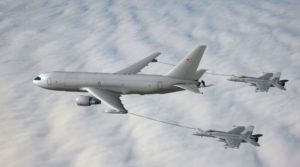

Debkafiles – October 21,2021
Israel is said to have earmarked some 5 billion shekels ($1.5bn) towards the IDF’s price tag for a potential strike against Iran’s nuclear program. Military sources report that this sum would be spent on the acquisition of different types of aircraft, intelligence gathering, drones and dedicated armaments for enabling attacks on Iran’s fortified underground facilities.
IN other words, Israel is short at present of a full set of tools for going past a limited operation and conducting a comprehensive offensive for disabling Iran’s nuclear weapons program, say DEBKAfile’s military sources.
This shortfall is prominent in five main areas:
-
- Assuming that a single raid would not finish the job, to conduct multiple waves, the Israeli Air Force would require to supplement its current force with dozens of additional F-35 and F-15 aircraft. This would also call for the recruitment of more flight crews.
- Once the Israeli offensive is launched, Tehran may be counted on to activate allies from four fronts closer to Israel’s borders: Syria, Lebanon, Iraq and Yemen. To forestall this potential proxy assault, the IAF has reorganized its assets by moving F-16 short range aircraft to the Ramat David base in the north. However, these aircraft are also in short supply and would have to be substantially augmented.
- An urgent request has been put in for the advanced Boeing-built KC-46 tankers (see photo) to refuel aircraft in flight across the 2,000km distance to Iran and back to base. The Re’em Boeing 707 in-flight fuel craft used hitherto are 60 years old and not up to the new task.
Interim landings in Saudi Arabia or a US Gulf airbase would solve the refueling problem. But this option has to be counted out in light of the contacts the Saudis and Emiratis are developing with Iran. Washington has indeed promised Israel eight advanced in-flight refueling tankers, but it will take years before they are available. - Israel is also asking for American MOAB GBU-43 bunker busters, that were designed specifically for targeting Iran’s fortified underground nuclear sites and tested once in the Afghanistan war. Israel has a small number of bunker busters. According to Western military observers, they were used against the Hamas’ underground “Metro” network last May in a mission dubbed “Lightning Bolt.” This was to have been a rehearsal for raids on Iran’s underground nuclear facilities. It turned out, however, that the Hamas bunker system had to be bombed multiple times to be effective and even then, sections of the Metro remained.
- In a war situation, Israel’s satellite coverage could not be stretched to cover Iran’s vastness (1.650 sq.km) and the additional areas commanded by its four main allies. American satellites would be called on for backup. Consent would have to be authorized by President Joe Biden as US commander on chief.